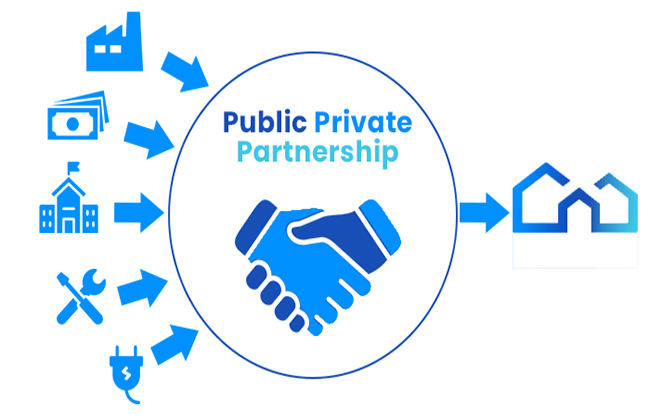
In recent years, public-private partnerships (PPPs) have spread rapidly. While usually profitable for the private partners, PPPs have generally not served the longer-term public interest.
PPPs as miracle all-purpose solution
As Eurodad has shown, PPP financing has grown in recent years, particularly in the Sustainable Development Goals (SDGs) funding discourses. Adopted by the UN in September 2015, the SDGs endorsed PPP financing.
Earlier, the mid-2015 Third UN Conference on Financing for Development in Addis Ababa had failed to ensure adequate financing. This was mainly due to rich nations opposing a UN-led international tax cooperation initiative.
Instead, PPPs were strongly endorsed in the 2015 Addis Ababa Action Agenda. Weeks later, SDG17 referred to PPPs as ‘means of implementation’. This all sought to “encourage and promote effective public, public-private and civil society partnerships”.
PPPs have been promoted as a means to finance and deliver infrastructure, social services and, increasingly, climate-related projects. Advocates claimed PPPs would also help overcome other problems besides funding. PPPs, they claimed, would help improve project selection, planning, implementation and maintenance.
PPP promotion
Some advocates even claim only the private sector can deliver high-quality investment and efficiency in infrastructure and social service delivery. Private financing reduces budget-constrained governments’ need to raise funds upfront to finance, develop and manage projects.
Increased private financing supposedly also overcomes public sector incapacity to deliver high-quality infrastructure and public services. Undoubtedly, many government capacities have been diminished by decades of structural adjustment, austerity and less public finance.
This has been worsened by rich countries’ unmet commitments to contribute 0.7% of national income as official development assistance (ODA) on concessional terms. The global North has also been unwilling to effectively stem illicit financial outflows, e.g., due to tax dodging.
PPP promotion has involved many means, media and institutions, including ‘donor’ agencies, multilateral development banks (MDBs), UN agencies, international consultants, transnational accounting firms, and the World Economic Forum (WEF).
The World Bank has long promoted private financial investments in development, as well as ‘blended finance’ and PPPs more recently. In 2022, the influential WEF even proclaimed PPPs as essential for pandemic recovery.
Promoting private finance
Such promotion of private finance has implications far beyond the actually modest amount of funds raised through ‘blended finance’ and PPPs. Almost every project so funded is touted as proof that private finance should be privileged, including by guaranteeing returns using public finance.
The World Bank and other MDBs are devoting considerable effort to advise governments on the use of PPPs. By contrast, they have not put comparable efforts into improving the quality and effectiveness of publicly financed infrastructure and social services.
Over the years, the World Bank Group has produced different tools – including model language for PPP contracts, which favour private sector interests – often to the detriment of the public partner, ultimately governments in need of financing.
Regional development banks – such as the Asian Development Bank, the African Development Bank and the Inter-American Development Bank – have strategic frameworks, networks and dedicated offices to support countries implementing PPPs.
National PPP promotion
PPP advocacy has led to changes in laws, regulatory frameworks and policy environments at international, national and local levels. Developing countries have also started including PPPs – to scale up infrastructure and public service provision – in national development plans.
Many developing countries have enacted laws enabling PPPs and set up ‘PPP Units’ to implement PPP projects. The World Bank, International Monetary Fund (IMF) and regional development banks work closely with private partners to provide policy guidance advising governments on how to best enable PPPs.
All this has transformed policy formulation for public service provision to attract private investors – an agenda Daniela Gabor dubs the ‘Wall Street Consensus’. This implies “an elaborate effort to reorganize development interventions around partnerships with global finance”.
PPPs have not delivered
But actual experiences have not confirmed this favourable impression promoted by PPP advocates. Instead, PPPs have become a major cause for concern. Reliable data on international PPP trends are hard to find. Also, different PPP definitions and terminology have confused reporting.
The World Bank’s Private Participation in Infrastructure Projects Database reports on economic infrastructure – such as for energy, transport, water and sewerage – in 137 low- and middle-income countries.
The Covid-19 pandemic undoubtedly disrupted PPP planning, preparation and procurement. But even the World Bank admits that delays and cancellations were not only due to Covid-19 as the pandemic exposed projects already in trouble for other reasons.
Nonetheless, PPPs’ financial impacts to date have been small, as the public sector continues to dominate. But little private investment – including PPPs – goes to low-income countries. Most such projects are concentrated in a few countries.
PPPs tend to be found in countries with large and developed markets allowing faster cost recovery and more secure revenues. This implies market ‘cherry-picking’ – a selection bias – with private investments going to more affluent urban areas rather than to the needy.
The major setbacks to both the SDGs and climate progress in the last decade are not only due to financing. But they are more than enough to underscore that recent reliance on blended finance and PPPs has worsened, rather than helped the situation. The empire of private finance has no clothes!
Jomo Kwame Sundaram is a prominent Malaysian economist. He is senior adviser at the Khazanah Research Institute, visiting fellow at the Initiative for Policy Dialogue, Columbia University, and adjunct professor at the International Islamic University.


